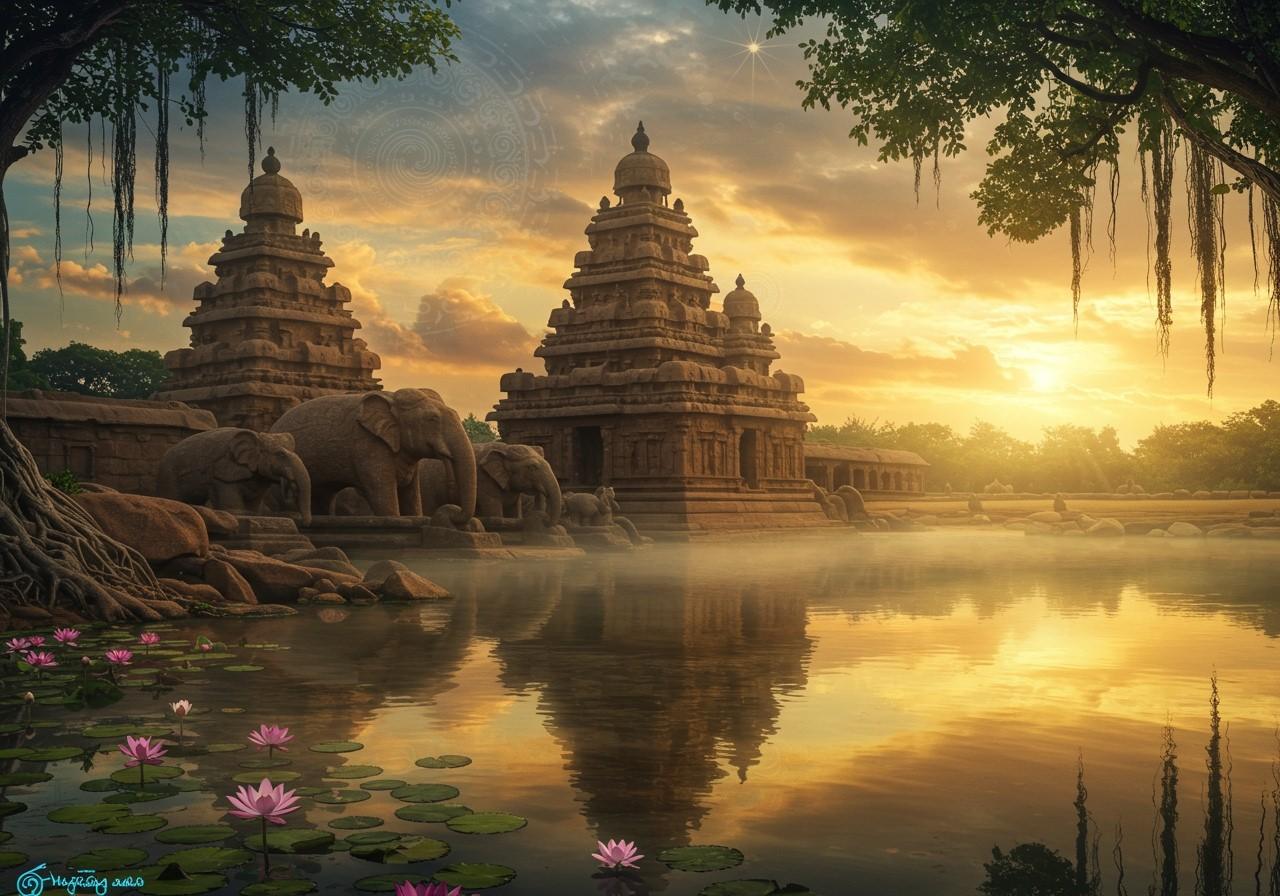
Mahabalipuram, also known as Mamallapuram, is a captivating coastal town in Tamil Nadu, India. Situated along the Bay of Bengal, it’s famed for its 7th- and 8th-century Hindu monuments crafted by the Pallava Dynasty. This blog delves into the spiritual and historical essence of Mahabalipuram, exploring its origins, remarkable structures, and the unique experiences it provides.
Unraveling the Dual Names: Mahabalipuram and Mamallapuram
Mahabalipuram and Mamallapuram are indeed two names for the same town. Originally known as Mamallapuram, it was named after the Pallava king Narasimhavarman I, also called Mamalla, “the great wrestler.” Later, the British renamed it Mahabalipuram. This dual nomenclature reflects the town’s rich history and the intertwining of local and colonial influences.
Origins of the Name Mahabalipuram
The name Mahabalipuram is believed to be associated with the demon king Mahabali, a figure prominent in Hindu mythology. These narratives add a layer of mystique to the town’s identity, blending historical accounts with captivating legends. The Pallava Dynasty’s influence is undeniable:
- Architectural Advancements: The Pallava rulers were pioneers of rock-cut temple architecture and intricate sculptural designs, evident throughout Mahabalipuram.
- Artistic Legacy: Their detailed carvings and sophisticated artistic expressions continue to inspire awe and admiration in visitors today, showcasing a high level of craftsmanship.
Local folklore plays a vital role in preserving these historical narratives, enriching the cultural tapestry of Mahabalipuram.
The Construction of Mahabalipuram’s Temples
The Mahabalipuram temple complex, including the iconic Shore Temple, was constructed during the 7th and 8th centuries under the patronage of the Pallava kings. This period marked a significant era for architectural and religious development in the region. The Shore Temple, one of the most celebrated structures, was built by Narasimhavarman II.
- 7th Century: This century saw the commencement of temple construction in Mahabalipuram, laying the foundation for the architectural wonders to come.
- 8th Century: The magnificent Shore Temple, a testament to Pallava architectural prowess, was completed during this period, becoming a landmark of the town.
Exploring Iconic Structures
- Shore Temple: An exceptional illustration of Dravidian architecture, the Shore Temple stands majestically on the coastline, a testament to Pallava artistry.
- Pancha Rathas: These five monolithic rock-cut structures, each carved from a single rock, display unique designs and exceptional craftsmanship, showcasing the diversity of Pallava architectural styles.
- Arjuna’s Penance: A massive open-air bas-relief, Arjuna’s Penance depicts scenes from Hindu mythology. It is one of the world’s largest bas-reliefs and a remarkable feat of artistic expression.
- Thirukadalmalai: Dedicated to Lord Vishnu, this temple is known for its intricate carvings and its connection to the Pallava dynasty.
Spiritual Experiences and Festivals
Mahabalipuram hosts various festivals and rituals that draw visitors from around the globe. The Mamallapuram Dance Festival, a celebration of classical Indian dance forms, is a highlight of the cultural calendar. These events enhance the spiritual atmosphere of the town.
Things to Do in Mahabalipuram
- Heritage Walks: Explore the archaeological sites and admire the ancient sculptures that narrate stories of the past.
- Beach Relaxation: Unwind on the serene beaches of the Bay of Bengal, soaking in the tranquil coastal ambiance.
- Cultural Immersion: Immerse yourself in the local culture by attending traditional performances and vibrant festivals.
Best Time to Visit
The ideal time to visit Mahabalipuram is from October to March when the climate is moderate and humid, perfect for exploring historical sites and enjoying the coastal beauty.
Poojn.in: Enhancing Your Spiritual Journey
Poojn.in, India’s leading cultural goods and services store, offers a wide range of products to enrich your spiritual experience in Mahabalipuram. For visits to the Shore Temple, Thirukadalmalai, and other sacred sites, we provide:
- Pure Copper Water Bottles: Maintain the purity of your water offerings with these traditional vessels.
- Cotton Vastram Sets: Adhere to traditional dress customs with our selection of appropriate temple attire.
- Brass Deepam and Diyas: Participate in temple aarti ceremonies with authentic brass lamps.
- Coconuts and Kumkum: Offer traditional items at Mahabalipuram’s temples.
Conclusion
Mahabalipuram offers a captivating blend of history, spirituality, and natural beauty. From the magnificent Shore Temple to the intricate Pancha Rathas, every corner of this town whispers tales of the past. Plan your visit and immerse yourself in the timeless charm of Mahabalipuram.


